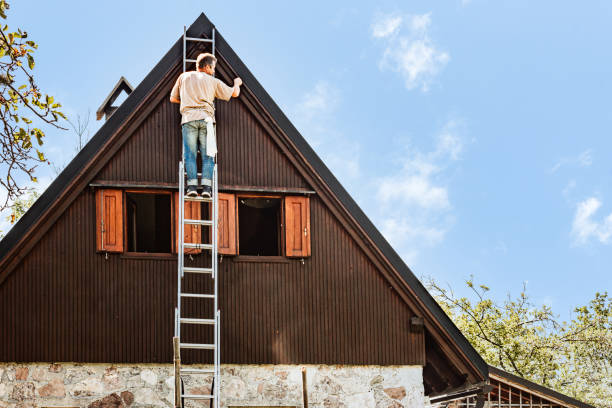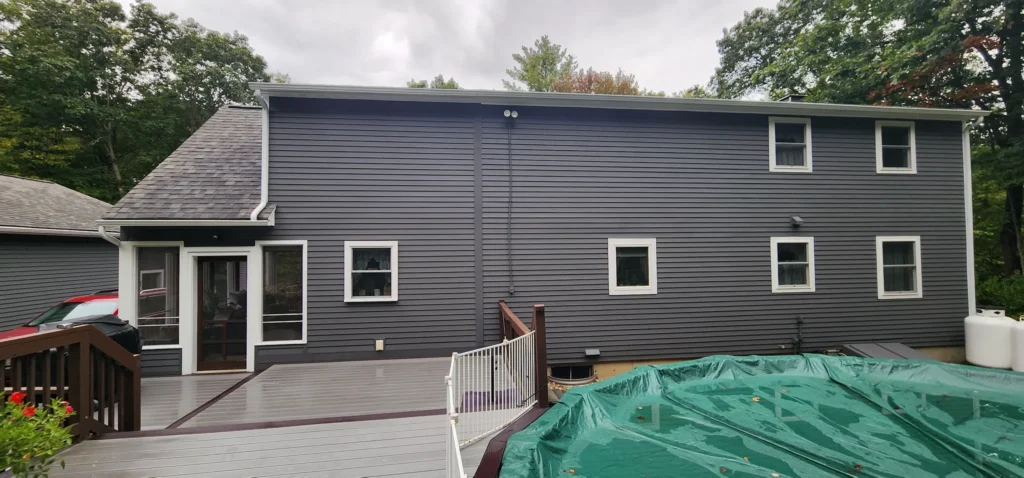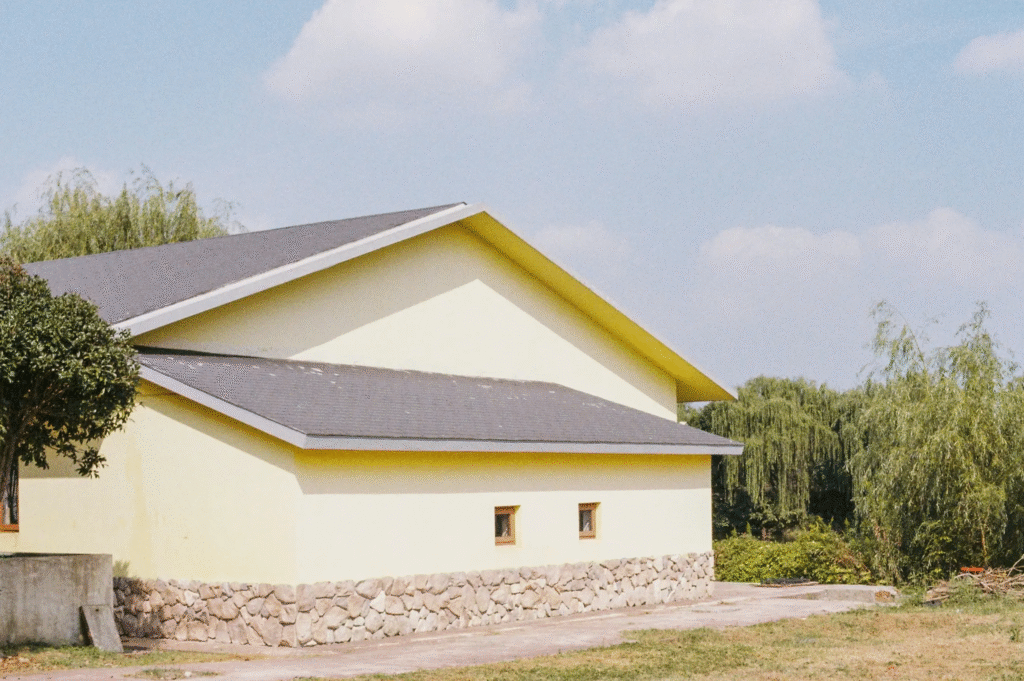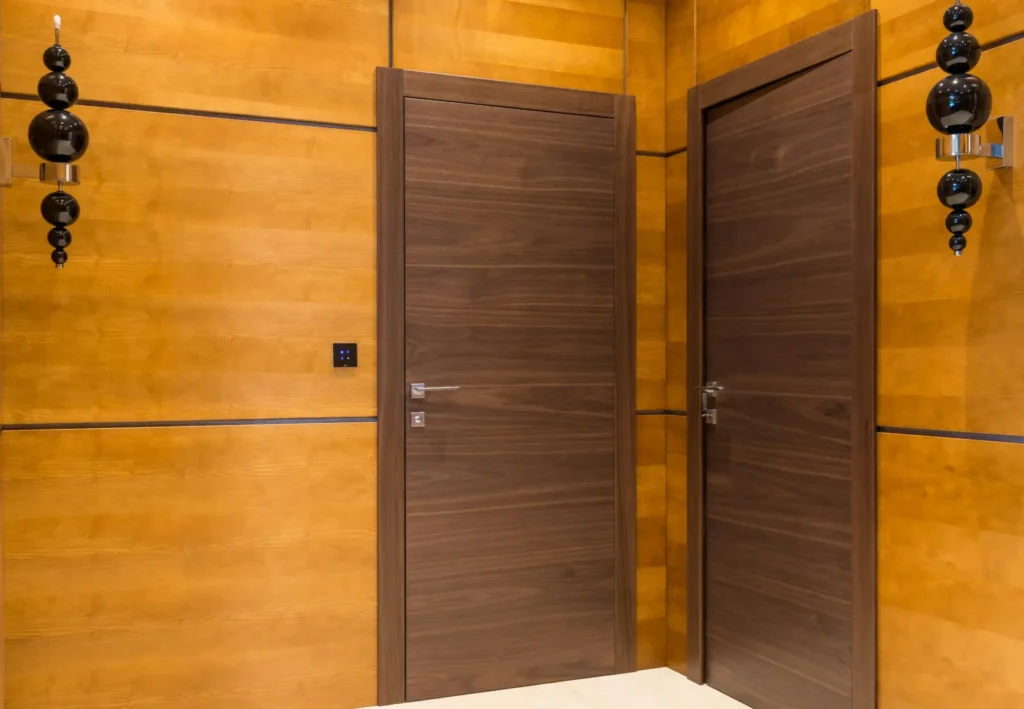When homeowners decide to repaint the exterior of their house, the first question they usually ask themselves is, “What color will look best?” Before making a final decision, it’s important to use paint samples to test how different colors will look on your home’s exterior and in relation to neighboring houses. Color is certainly important for curb appeal, but in reality, the type of paint you choose and how well the surface is prepared have a much greater impact on the durability and quality of the final result.
This is particularly true in New England, where the climate presents unique challenges that can quickly expose weaknesses in poor paint choices or rushed preparation. Without the right products and proper application, even the most carefully chosen shade will begin to peel, crack, or fade long before its time.
The Challenges of New England Weather
Painting a home in New England is not the same as painting in regions with milder or more predictable climates. The four-season cycle brings wide temperature swings, heavy precipitation, and long winters, all of which affect how paint performs. Homeowners must carefully consider these factors to avoid costly mistakes.
Winter Cold and Snow
The long winters in New Hampshire and surrounding states are repeated freeze-thaw cycles that put stress on every exterior surface. Moisture seeps into wood or small gaps in siding during the day, then freezes and expands overnight. This constant expansion and contraction pushes against the paint film, causing it to crack or peel if the paint lacks flexibility or if the surface was not primed properly. In extreme cases, poor preparation can even allow water to penetrate siding and lead to structural damage.
Spring Rain and Humidity
Spring for exterior paint it is one of the most punishing times of year. New England receives consistent rainfall and higher humidity levels in spring, which can lead to paint blistering, bubbling, and even mold growth. If the wrong type of paint is used, one that is not formulated for moisture resistance, the finish will quickly deteriorate.
Summer Sun and Heat
The summer months may not be as extreme as in the southern United States, but New England summers bring long days of intense sunlight and higher temperatures. Ultraviolet (UV) rays are particularly harsh on darker colors, which tend to fade faster. Low-quality paints can lose their vibrancy within a couple of years. Additionally, overly bright colors can appear too intense or unnatural in strong summer sunlight, so it’s best to avoid using them for exterior elements.
Autumn Transitions
Autumn often provides the most favorable conditions for painting, with cooler temperatures and reduced humidity. However, the transition into colder months presents its own risks. Paint applied too late in the season may not have enough time to cure properly, leaving it vulnerable to cracking and reduced adhesion. Professional painters in New England know how to schedule projects during the ideal weather window to avoid this problem.

Considering Style and Era of New England Homes
When selecting exterior paint colors for your New England home, it’s important to let your home’s style and era guide your choices. The architectural character of your house—whether it’s a classic Colonial, a charming Cape Cod, or a sleek modern build—can help you narrow down paint colors that not only look beautiful but also feel authentic to your home’s history and surroundings. For historic New England homes, traditional exterior paint colors often reflect the region’s rich heritage, with palettes inspired by historic New England architecture. These might include deep reds, muted blues, or creamy whites that have stood the test of time. On the other hand, if your New England home is more contemporary, you have the freedom to explore bolder, trend-forward paint colors that make a statement while still complementing the local landscape.
Architectural Styles Common in New England
New England’s neighborhoods are filled with a variety of architectural styles, each with its own personality and ideal exterior paint colors. Cape Cod homes, with their simple lines and wood siding, often look best in classic shades like crisp white, soft gray, or gentle blue, paired with contrasting trim for a timeless effect. Colonial and Federal-style homes, known for their symmetry and brick or wood exteriors, traditionally feature subdued paint colors such as off-white, pale yellow, or muted earth tones, which highlight their elegant proportions. Greek Revival homes may use brighter whites to accentuate columns and trim, while Victorian houses, with their ornate details and intricate trim, offer the perfect canvas for more vibrant and varied color palettes—think deep greens, rich reds, or even multiple accent colors to showcase decorative features.
How Era Influences Color Choices
The era in which your home was built can have a significant impact on your exterior paint color selection. Historic homes, especially those dating back to the Civil War or earlier, often feature more restrained and earthy color palettes, designed to harmonize with natural materials like wood siding and stone. These homes typically look best with exterior paint colors that echo the original hues—think soft grays, muted greens, or creamy whites that highlight the craftsmanship and character of historic homes. In contrast, homes built in more recent decades, especially those with vinyl siding or modern design elements, can support a wider range of paint colors, including brighter or more contemporary shades.
Working with Fixed Elements
When planning your exterior painting project, it’s essential to take into account the fixed elements of your home—features like the roof, stonework, and brick that are not easily changed. These permanent aspects of your home’s exterior play a major role in determining which exterior paint colors will look best and create a harmonious overall appearance. Ignoring these elements can result in clashing colors or a disjointed look, while thoughtfully coordinating your paint colors with these features can elevate your home’s curb appeal and create a polished, unified effect. Whether your home features a classic brick façade, a slate roof, or natural stone accents, considering these fixed elements from the start will help you choose exterior paint colors that enhance your home’s best features and blend seamlessly with its surroundings.
Coordinating with Roofs, Stone, and Brick
To achieve a cohesive and attractive exterior color scheme, it’s important to coordinate your exterior paint colors with the fixed elements of your home, such as the roof, stone, and brick. Start by identifying the dominant tones in these features—does your roof have a dark green, gray, or brown hue
Prep Work Is More Important Than Paint Color
Many homeowners fixate on choosing the perfect paint color, believing it will make or break the look of their home. While color does matter for curb appeal, what truly determines whether your paint job lasts is the quality of the preparation. In New England’s demanding climate, prep work is the foundation of a durable finish.
1. Surface Cleaning and Inspection
Before any primer or paint touches your siding, surfaces must be thoroughly cleaned. Dirt, mildew, chalky residue, and salt deposits prevent proper adhesion. Pressure washing is a common method, but it must be done carefully to avoid damaging wood fibers. The Centers for Disease Control and Prevention highlights that mold and mildew growth outdoors can pose health risks if left untreated. Cleaning removes these hazards while giving paint a solid surface to adhere to.
2. Repairing Damaged Surfaces
Even the highest-quality paint cannot cover structural problems. Cracked siding, rotted trim, or loose boards must be repaired or replaced before painting. Filling gaps with high-grade exterior caulk helps prevent moisture intrusion, one of the primary causes of peeling and blistering. Neglecting these repairs means paint may trap moisture inside the wood, leading to accelerated decay.
3. Scraping and Sanding Old Paint
Old, peeling paint must be removed for new coatings to bond effectively. Skipping this step creates an unstable surface where fresh paint will quickly fail. According to the U.S. Department of Energy, proper surface preparation reduces heat loss and improves energy efficiency when combined with exterior coatings. Sanding not only smooths rough patches but also opens up wood pores, helping primer penetrate more deeply.
4. Priming Before Painting
Primer is often underestimated but serves as a critical bonding agent between raw surfaces and the topcoat. For homes in New England, oil-based or stain-blocking primers are often necessary, especially on bare wood or areas prone to tannin bleed from cedar and redwood. A well-primed surface ensures even color application and longer-lasting protection against moisture.
5. Why Prep Matters More Than Color palette
Ultimately, a poor preparation job will undermine even the most expensive premium paints. A professionally prepared surface can extend the life of your paint job by years, saving thousands in repainting costs. As Benjamin Moore’s professional painting guides emphasize, prep work accounts for up to 70 percent of a successful paint project.
Preparation may not be glamorous, but it is the difference between a flawless, long-lasting finish and a disappointing, short-lived one. In a region where weather constantly challenges exterior surfaces, skipping prep is a mistake homeowners cannot afford to make.

Choosing the Right Paint and Application Tips
Once your surface preparation is complete, the next critical step is selecting the right paint and applying it with precision. Many homeowners underestimate this stage, focusing on color alone, but in New England’s demanding climate, the type of paint, timing, and application technique determine how long your investment will last. For best results, consult paint experts for advice on selecting the best exterior paint colors and finishes for your specific home and climate.
1. Selecting the Right Paint
For exterior projects in New England, 100% acrylic latex paints are widely recommended. Unlike oil-based paints, acrylic latex expands and contracts with changing temperatures, reducing the risk of cracking and peeling. They also resist mildew growth, which is important in regions with humid summers and snowy winters. Another benefit is environmental: according to the EPA on Paints and Coatings, water-based paints release fewer volatile organic compounds (VOCs), improving air quality around your home.
In addition to paint type, you should consider finish. Satin or low-luster finishes are ideal for siding because they strike a balance between durability and appearance, while high-gloss finishes work best on trim and doors where added protection is needed.
When selecting exterior paint, it’s important to choose the right trim color to complement your siding. Brands like Benjamin Moore offer a wide range of exterior colors and visualization tools to help you find the perfect match. Doors, especially the front door, can serve as a focal point—selecting a door color that matches or contrasts with your trim and siding can enhance curb appeal and create visual impact. Coordinate window trim, shutters, and window sashes by painting them the same color for a cohesive look, or use contrasting shades for added interest.
2. Timing and Weather Conditions
New England’s weather presents unique challenges. Paint applied on hot, sunny days dries too quickly, leaving streaks and uneven coverage. On the other hand, painting just before rain can cause blistering or wash-off. The ideal conditions are mild temperatures, moderate humidity, and overcast skies. This allows the paint to cure properly, creating a strong, lasting bond with your home’s exterior.
3. Application Techniques
The choice between spraying, brushing, or rolling depends on the surface. Sprayers cover large areas quickly, but brushes and rollers ensure deeper penetration on textured siding or wood grain. Regardless of method, two thin coats are almost always better than one thick one. Thin coats dry more evenly and adhere better, extending the lifespan of your paint job.
You can read more about how to prep for the interior painting here.
Why Professional Help Matters
While DIY painting may seem cost-effective, it often leads to uneven finishes, wasted paint, or early repainting. At Honest Brothers Painting, we go beyond just adding color—we deliver lasting protection and beauty for your home. Our team understands New England’s unique weather cycles, works with premium paints, and follows a proven process to ensure results that stand the test of time.
Homeowners who choose us don’t just receive a fresh coat of paint; they gain long-term durability, enhanced curb appeal, and peace of mind.
Ready to give your home an exterior upgrade that truly lasts? Explore our residential exterior painting services or request a free estimate today. Let the Honest Crew protect your biggest investment—the honest way.











